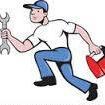- Replies 14
- Views 2.2k
- Created
- Last Reply
Top Posters In This Topic
-
Mopar1973Man 5 posts
-
LorenS 3 posts
-
IBMobile 2 posts
-
015point9 2 posts
Popular Days
Most Popular Posts
-
I pull the fuel pump relay when the truck is going to sit for awhile to prevent theft. NOTE: if you try to start the engine with the relay out it will not start and the check engine light will t
-
Pull the distributor and spin the oil pump with a drill and homemade tool. Oh wait... ?
-
i'd just discnnect the vp44 harness from the pump and crank.







Is there a fuse I can remove to keep from starting...or something else I can do to turn over the engine to circulate some oil prior to starting? Or maybe I don't need to do anything?
Currently 1/2 tank of fuel, my game plan from VP44 back to fuel tank is to drain and flush, new filters and biocide
I assume pretty dry inside engine is reason for asking.
(Between Thanksgiving and Christmas have lots planned...additional fuel filter, flush cooling system, WT Mod, and updated radio)
Thanks